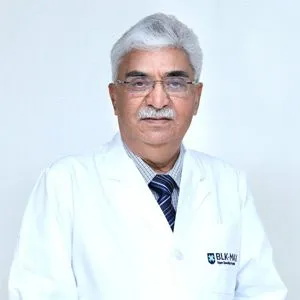Best Kidney Transplant Specialists in Artemis Hospital Gurgaon
 30 December,2025
Read More
30 December,2025
Read More
Starting From: USD 26,665 - USD 30,075
Left Ventricular Reconstructive Surgery (Modified Dor Procedure) is affordable in India. The cost of Left Ventricular Reconstructive Surgery (Modified Dor Procedure) in India lies between USD 26,665 - USD 30,075. The exact procedure price depends on multiple factors such as the surgeon's experience, type of hospital, severity of the condition, patient's general condition,�etc.
Ischemic cardiomyopathy is a debilitating condition characterized by a weakened and enlarged left ventricle due to inadequate blood supply to the heart muscle. This often follows a heart attack, leading to heart failure. Left Ventricular Reconstructive Surgery, specifically the Modified Dor Procedure, stands at the forefront of innovative surgical interventions. It aims to restore the heart's structure and function, offering renewed hope to individuals facing this complex cardiovascular condition.
Ischemic cardiomyopathy results from a compromised blood flow to the heart muscle, typically due to coronary artery disease. This reduced blood supply leads to heart muscle damage, ultimately weakening the left ventricle's ability to pump blood efficiently. As a consequence, heart failure ensues, accompanied by symptoms like fatigue, shortness of breath, and fluid retention.
Left Ventricular Reconstructive Surgery encompasses a range of procedures aimed at restoring the left ventricle's shape, size, and function. Among these, the Modified Dor Procedure, named after its developer Dr. Vincent Dor, has gained significant recognition.
The Modified Dor Procedure is a sophisticated surgical technique designed to address the structural changes in the left ventricle caused by ischemic cardiomyopathy. It involves meticulous reconstruction of the ventricular wall, aiming to enhance its contractility and overall function.
Key Steps in the Modified Dor Procedure
The Modified Dor Procedure is a specialized surgical intervention designed for individuals with advanced ischemic cardiomyopathy. It is a complex procedure that requires careful patient selection to ensure the best outcomes. The following characteristics and circumstances may make individuals potential candidates for the Modified Dor Procedure:
It is important to note that the decision to undergo the Modified Dor Procedure should be made collaboratively between the patient and their healthcare provider, who will consider the specific characteristics and needs of the individual. Additionally, they will provide detailed information about the potential benefits and risks associated with the procedure. Each patient is unique, and the suitability for the Modified Dor Procedure should be based on a thorough evaluation by the healthcare team.
The Modified Dor Procedure offers several notable advantages:
While the Modified Dor Procedure offers significant benefits, it is important to consider potential challenges:
The Modified Dor Procedure stands as a groundbreaking intervention in the treatment of advanced ischemic cardiomyopathy. By meticulously reconstructing the left ventricle, this surgical technique offers renewed hope to individuals facing the challenges of heart failure. With advancements in surgical techniques and post-operative care, the Modified Dor Procedure continues to be a cornerstone in the management of ischemic cardiomyopathy. It is important for individuals considering this procedure to consult with their healthcare team to determine if it is the right option for their specific circumstances.

Chairman
Interventional Cardiologist
BLK-Max Super Speciality Hospital, New Delhi

Director
Cardiologist, Interventional Cardiologist
Max Super Speciality Hospital, Saket, New Delhi

Chairman
Cardiac Electrophysiologist, Interventional Cardiologist
BLK-Max Super Speciality Hospital, New Delhi

Consultant
Interventional Cardiologist
Indraprastha Apollo Hospital, New Delhi

Head of Department (HOD)
Cardiologist
Nanavati Super Specialty Hospital, Mumbai

Consultant
Interventional Cardiologist
Apollo Hospital Chennai, Greams Road
Doctor of Pharmacy
Dr. Deepanshu Siwach is a skilled clinical pharmacist with a Doctor of Pharmacy degree.?He has 4+?years of experience and has worked with thousands of patients. He has been associated with some of the top hospitals, such as Artemis Gurgaon.
Dr. Deepanshu Siwach is a skilled clinical pharmacist with a Doctor of Pharmacy degree.?He has 4+?years of experience and has worked with thousands of patients. He has been associated with some of the top hospitals, such as Artemis Gurgaon....
Dr. Aseem Ranjan Srivastava is an experienced Pediatric Cardiothoracic Surgeon specializing in Minimal Access and Robotic Cardiac Surgery. He strongly recommends prompt corrective repair when possible....
The Art of Effective Communication
 30 December,2025
Read More
30 December,2025
Read More
 24 December,2025
Read More
24 December,2025
Read More
 23 December,2025
Read More
23 December,2025
Read More
 17 December,2025
Read More
17 December,2025
Read More
 16 December,2025
Read More
16 December,2025
Read More
 10 December,2025
Read More
10 December,2025
Read More